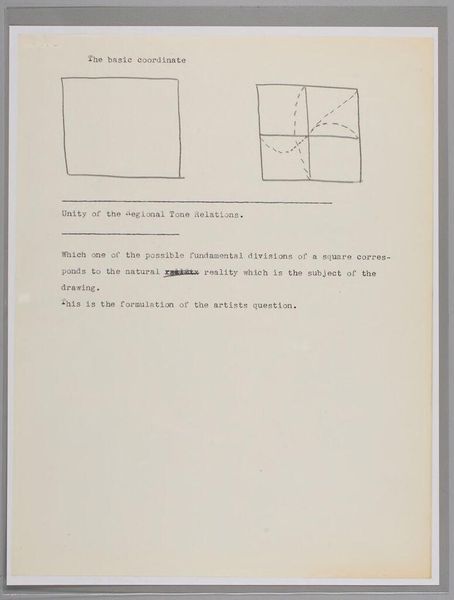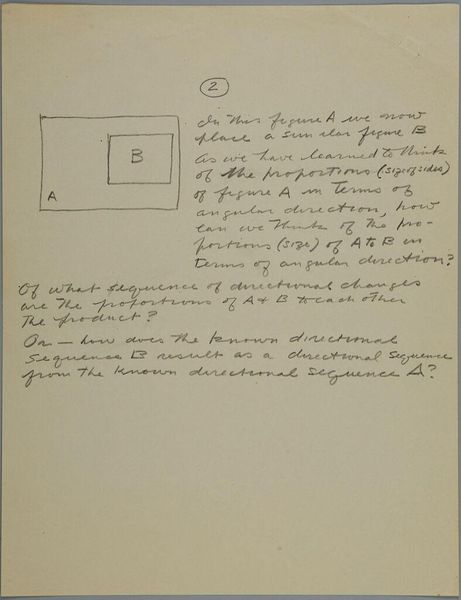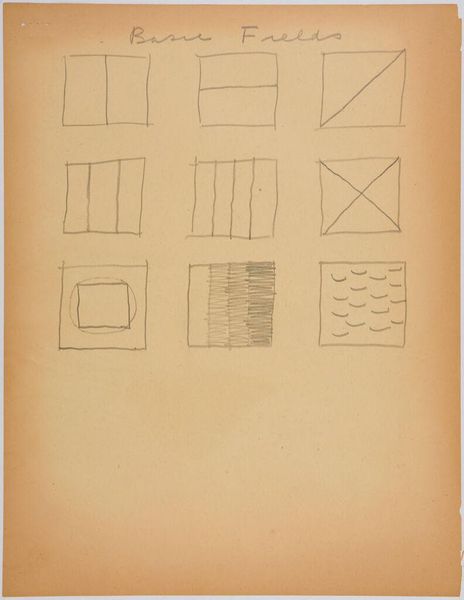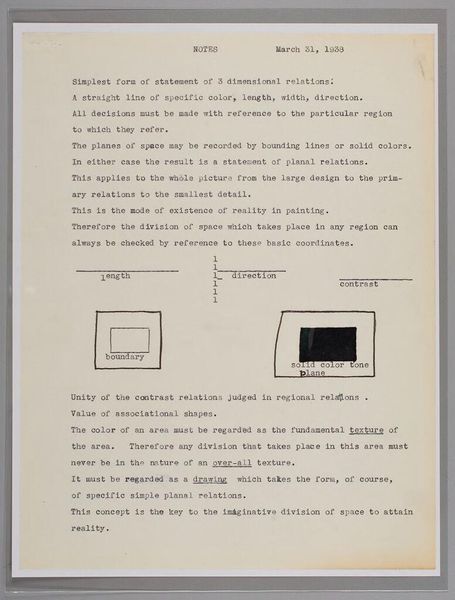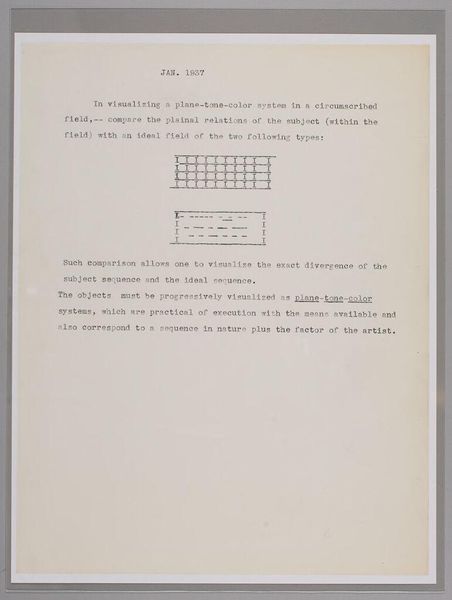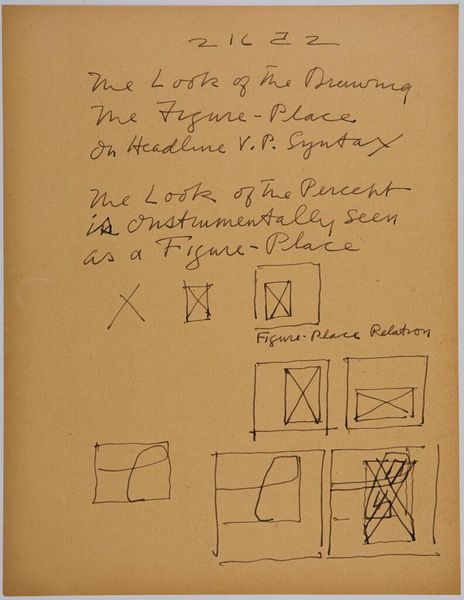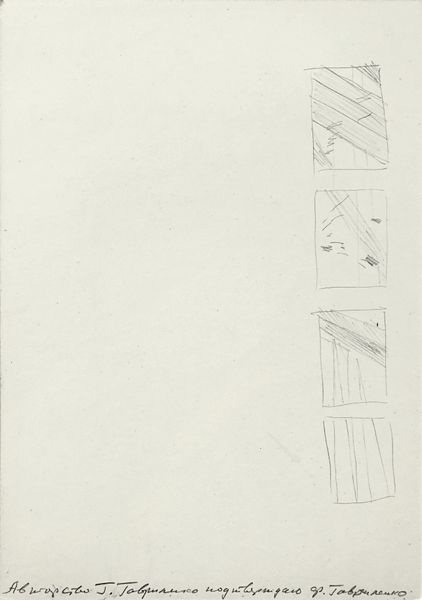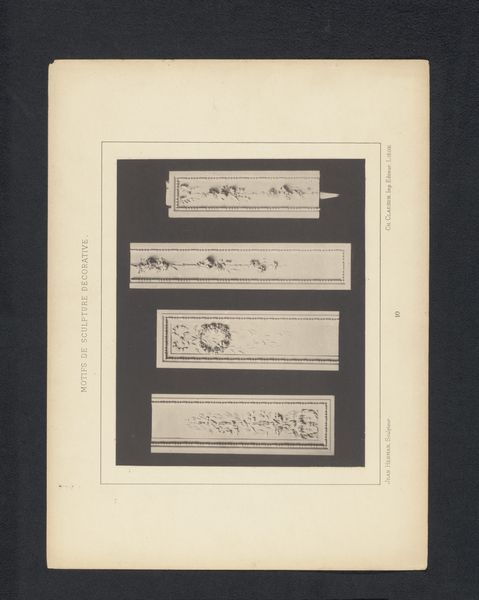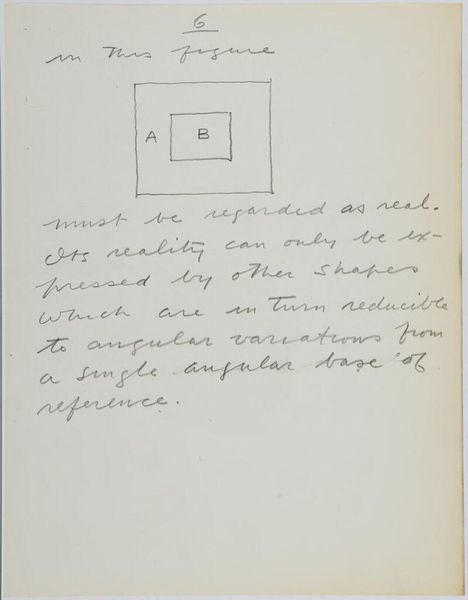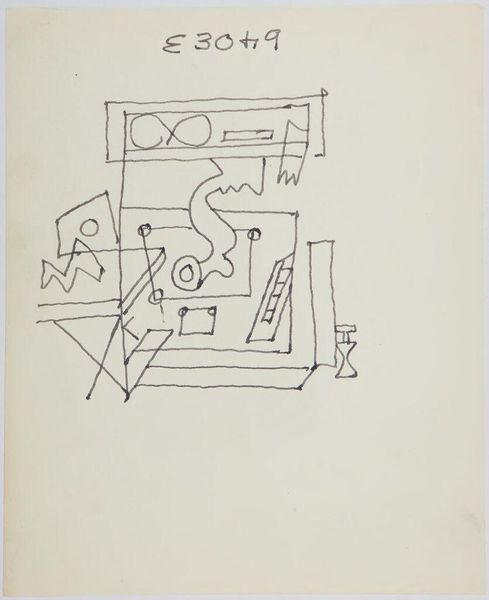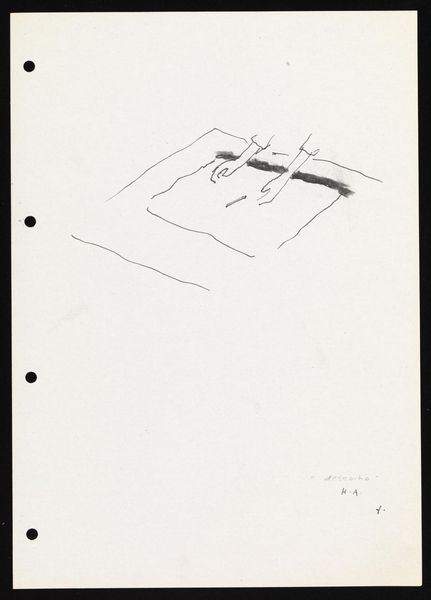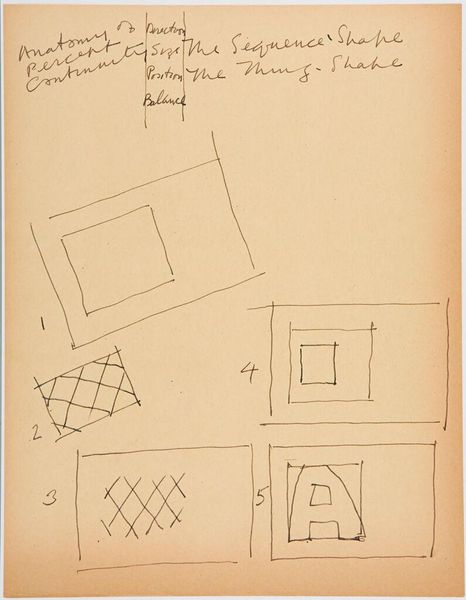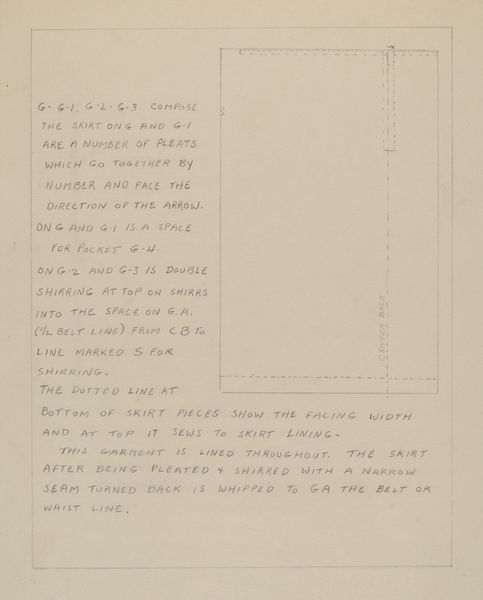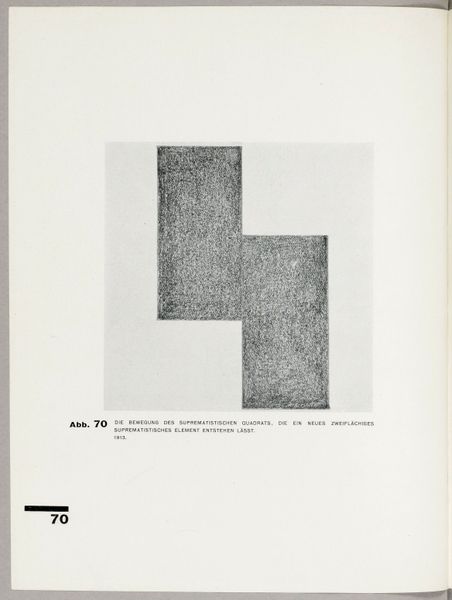
Dimensions: 27.9 x 21.6 cm (11 x 8 1/2 in.)
Copyright: CC0 1.0
Curator: Stuart Davis, a key figure in American modernism born in 1892, created this work. The Harvard Art Museums hold these "Planal Order Diagrams," whose date isn't specified. They appear to be studies in spatial relationships. Editor: It looks like a page torn from a notebook— a little dry, almost mathematical, but there's something compelling about the stark simplicity. Like blueprints for… something. Curator: Davis was deeply interested in abstracting from reality. These diagrams, along with the accompanying text, reveal his process of reducing observed facts to fundamental planal relationships. We see his method, the intellectual rigor behind his vibrant paintings. Editor: I like the idea of boiling the world down to basic shapes. It's like he's saying, "Here's the skeleton key to seeing." It makes me think about how we construct meaning. Curator: Exactly! And how those constructions are rooted in objective observation, yet transformed through subjective interpretation. His work engages with the modernist project of re-evaluating representation. The text itself at the top suggests that there is an objective method to the process of the artist. Editor: True. It's a reminder that even the wildest art often comes from a place of serious thinking. This diagram makes me want to pull out my own notebook and start diagramming the world. Curator: It's a call to analyze, to deconstruct, to understand the underlying structures that shape our perceptions. Editor: Absolutely. Who knew a few squares could be so revolutionary?
Comments
No comments
Be the first to comment and join the conversation on the ultimate creative platform.
